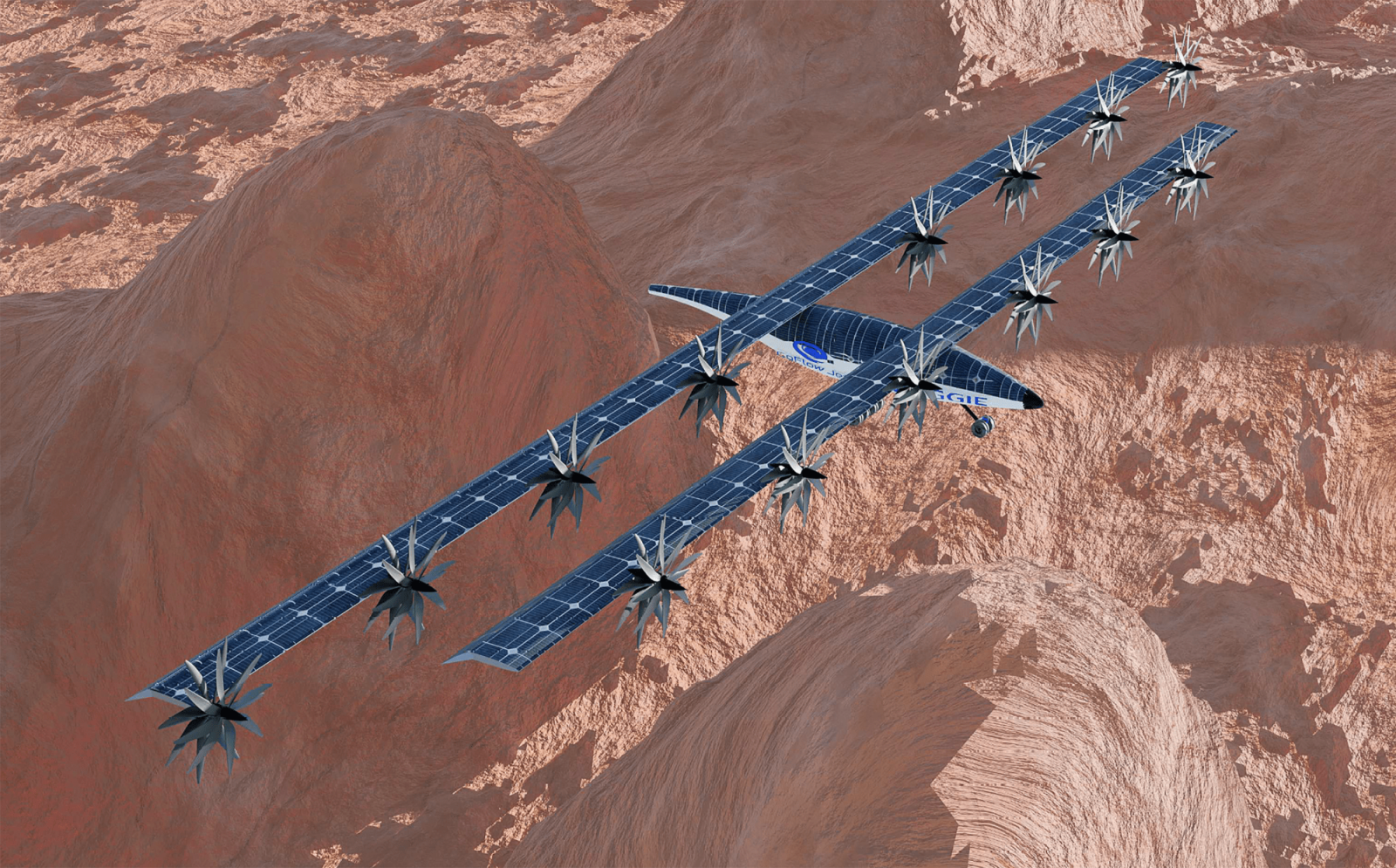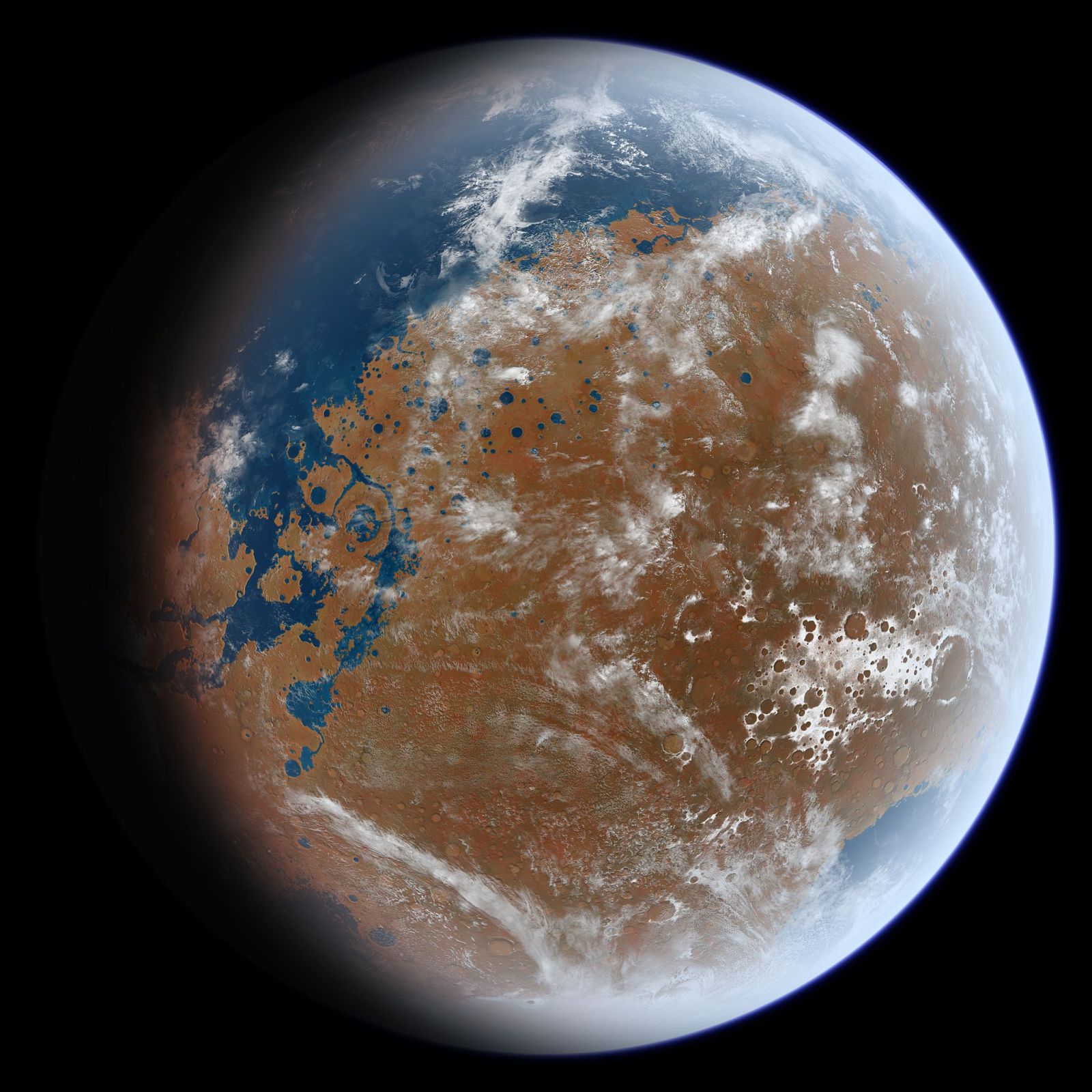Follow us on Google News (click on ☆)
Equipped with Vertical Take-Off and Landing (VTOL) capabilities, MAGGIE could cover up to 111 miles (179 kilometers) on a single charge and is designed to autonomously travel approximately 10,000 miles (16,048 kilometers) over a Martian year, which equals roughly two Earth years. Flying at an altitude of around 3,280 feet (1,000 meters) above Mars, MAGGIE will focus on three scientific research areas: the quest for water, understanding the source of Mars' weak magnetic field, and the search for methane traces, a potential life indicator depending on its origin.

Artistic representation of MAGGIE (Mars Aerial and Ground Global Intelligent Explorer).
Credit: Ge-Cheng Zha
Although MAGGIE's technology is promising, it is still in the early stages. Ge-Cheng Zha, the project's lead investigator at Coflow Jet, LLC, emphasizes that while the concept is "feasible," further studies in the significantly different Martian atmospheric conditions are needed. This Phase 1 funding from the NASA Innovative Advanced Concepts (NIAC) program allows for continued research on this concept.
According to Zha, MAGGIE "would revolutionize our ability to explore almost the entire Martian surface" and generate significant public interest due to its boldness and the variety of environments it could explore, study, and image. While NIAC funding does not guarantee a future flight date for MAGGIE, other flying devices could soon be deployed to Mars, depending on available funding.
The Ingenuity aircraft, already on Mars, continues to exceed expectations. Initially designed for just five flights, it has completed over 70 and continues to support the Perseverance rover's mission in the search for water and ancient life. Ingenuity is a prime example of NIAC's success, demonstrating the technological legacy of such devices. Thus, MAGGIE might follow in the footsteps of Ingenuity and offer a new perspective in Mars exploration.
The search for water on Mars: a major challenge for MAGGIE
The pursuit of water on Mars is one of the most important scientific goals for Martian missions, including for the MAGGIE vehicle. Understanding the presence, history, and distribution of water on Mars is vital for several reasons.
Firstly, water is a key indicator of potential past life on the planet. Mars shows clear evidence of ancient waterways, such as valleys and dried-up river deltas, suggesting that liquid water was once plentiful on its surface. Detecting and analyzing current water, whether as ice or underground, could provide valuable insights into Mars' climatic and geological history.
Secondly, water is an essential resource for future human missions to Mars. Understanding where and how water can be accessed on Mars is crucial for planning manned missions. Water could be employed for drinking, producing breathable oxygen, and even rocket fuel.
Finally, studying water on Mars aids scientists in understanding the geological and climatic processes that shaped the planet. This includes the evolution of its atmosphere and the potential for it to have once supported conditions conducive to life.
MAGGIE, with its ability to fly and explore regions that are difficult for rovers to reach, could play a pivotal role in this quest. Its mission to survey the Martian surface and collect data on the presence of water, as well as other scientific goals, could offer new insights into these fundamental questions.
